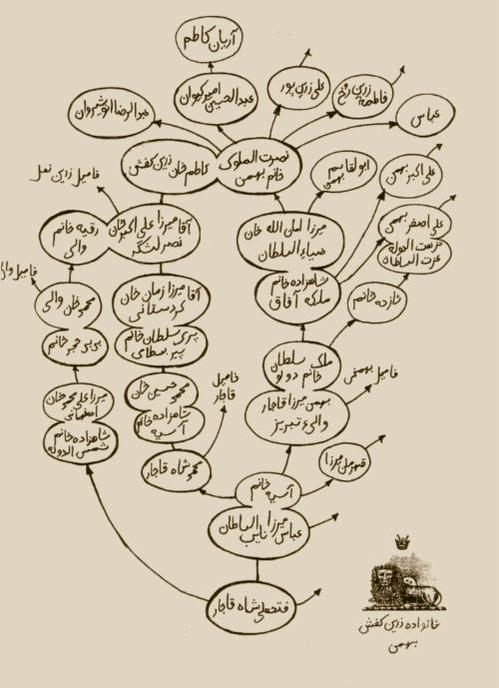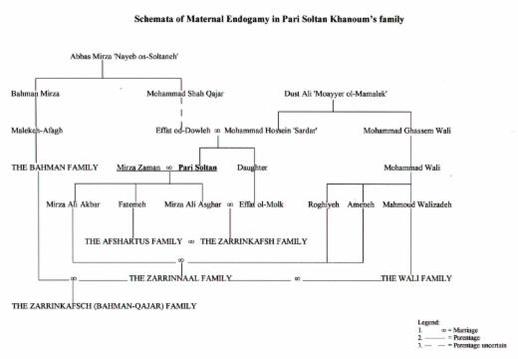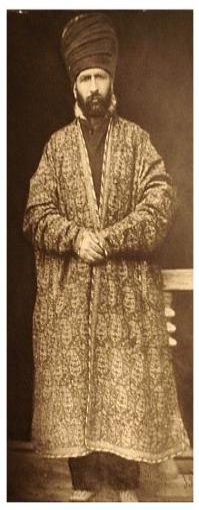| The Line of Mirza Zaman Khan The Line of Moayyer-Mamaleki The Line of Bahman Mirza The Behnam Genealogy |
The Zarrinkafsch-Bahman (Qajar) Family |
The Family Trees
All the different lines and branches of our family traced back to one single royal ancestor: Fath Ali Shah Qajar. On the following sites there are shown the several family lines related to the House of Zarrinkafsch (Bahman-Qajar) in paternal and maternal line.
In Qajar Persia marriages were arranged and not only made for family or sexual purpose but because of economical reasons and family property, too. A pragmatic marriage, facilitated by formal procedures of family or group politics, was encouraged often by a professional matchmaker to find a suitable spouse for an unmarried person. The authority figure could be parents, family, a religious official, or a group consensus, and normally chose a match for purposes other than marital harmony. Because of these economical reasons and to strengthen the family bonds within the same line endogamy, the practice of marrying within the same social group was traditionally very common in Persian society. Endogamy played an important role in social stratification and could refer to different social factors such as origin, occupations, activities, or education. These relationships were created because people feel more comfortable around people of their own social group with similar lifestyles. Elite families generally contribute to endogamy within big business. As all big business works together, so do the families running them. In Qajar Persia the court grandees and state officials could pave the way for their offspring to follow a similar path in their business. Being a member of this group create social bonds that are continued through one’s life and often through generations.
The fact that Mirza Zaman Khan married relative lately in his late twenties was under the circumstances of his move to Tehran. He came from outside, had no female relatives in the city who could know a candidate, and first had to established occupationally. All that made it difficult to find an able bride for him.
In contrast his children were married in their middle to late teens, normal in those days. Grown up with all advantages of young aristocrats in Tehran, their father’s position at court and wealth and at least a network of female relatives from their mother’s side made it possible to marry within the same group of kinsmen and Qajar relatives arranged by the matrilineal bonds of Pari Soltan Khanoum. Maybe this is also a reason why the traditional paternal endogamy of Persian and especially Kurdish families hardly existed in favour of a maternal one in our own family.
To view the Ancestry Line of Arian K. Zarrinkafsch - click here
This website was created by Arian K. Zarrinkafsch (Bahman-Qajar).




